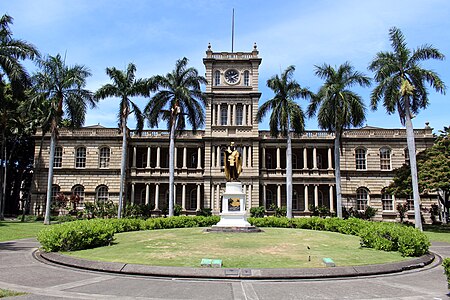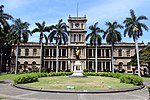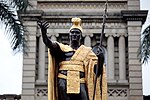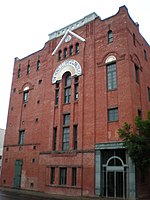Supreme Court of Hawaii

The Supreme Court of Hawaii is the highest court of the State of Hawaii in the United States. Its decisions are binding on all other courts of the Hawaii State Judiciary. The principal purpose of the Supreme Court is to review the decisions of the trial courts in which appeals have been granted. Appeals are decided by the members of the Supreme Court based on written records and in some cases may grant oral arguments in the main Supreme Court chamber. Like its mainland United States counterparts, the Supreme Court does not take evidence and uses only evidence provided in previous trials. The court meets in Aliʻiōlani Hale in Honolulu.
Excerpt from the Wikipedia article Supreme Court of Hawaii (License: CC BY-SA 3.0, Authors, Images).Supreme Court of Hawaii
South King Street, Honolulu Hawaii Capital Historic District
Geographical coordinates (GPS) Address Nearby Places Show on map
Geographical coordinates (GPS)
| Latitude | Longitude |
|---|---|
| N 21.305478 ° | E -157.859974 ° |
Address
Ali'iolani Hale (Hawaii Supreme Court)
South King Street 417
96813 Honolulu, Hawaii Capital Historic District
Hawaii, United States
Open on Google Maps









